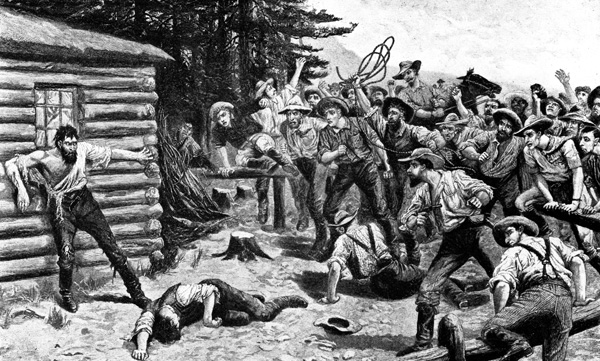California Gold Rush
A miner describes his journey to the gold fields and the mining camps. The California Gold Rush (1848–1855) began on January 24, 1848, when gold was found by James W. Marshall at Sutter's Mill in Coloma, California. The news of gold.


On January 24, 1848, a carpenter working at a mill in northern California made a discovery that would change the course of American history—two gold nuggets. Within a year, tens of thousands of people (popularly known as ‘49ers) were traveling to the land around John Sutter’s mill in hopes of striking it rich. Some failed, some were successful, but nearly all of the prospectors faced severe hardships during their fortune-hunting days. Check out eight facts you may not know about the California Gold Rush.
California did not have the first gold rush in American history. That honor actually belongs to North Carolina. Fifty years before gold was discovered at Sutter’s mill, the first gold rush in American history got underway after a 17-pound gold nugget was found in Cabarrus County, North Carolina. Eventually, more than 30,000 people in the Tar Heel state were mining for gold, and for more than 30 years all gold coins issued by the U.S. Mint were produced using North Carolina gold. The Gold Rush was the largest mass migration in U.S.
In March 1848, there were roughly 157,000 people in the California territory; 150,000 Native Americans, 6,500 of Spanish or Mexican descent known as Californios and fewer than 800 non-native Americans. Just 20 months later, following the massive influx of settlers, the non-native population had soared to more than 100,000. And the people just kept coming. By the mid 1850s there were more than 300,000 new arrivals—and one in every 90 people in the United States was living in California. All of these people (and all of this money) helped fast track California to statehood. In 1850, just two years after the U.S. Government had purchased the land, California became the 31st state in the Union.
The Gold Rush attracted immigrants from around the world. In fact, by 1850 more than 25 percent of California’s population had been born outside the United States. As news of the discovery was slow to reach the east coast, many of the first immigrants to arrive were from South America and Asia. By 1852, more than 25,000 immigrants from China alone had arrived in America.
As the amount of available gold began to dwindle, miners increasingly fought one another for profits and anti-immigrant tensions soared. The government got into the action too. In 1850 California’s legislature passed a Foreign Miner’s tax, which levied a monthly fee of $20 on non-citizens, the equivalent of more than $500 in today’s money. Drivers Jetway M28gt4d3-lf. Java Games Pacman. That bill was eventually repealed, but was replaced with another in 1852 that expressly singled out Chinese miners, charging them $2 ($80 today) a month. Violence against foreign miners increased as well, and beatings, rapes and even murders became commonplace. However no ethnic group suffered more than California’s Native Americans.